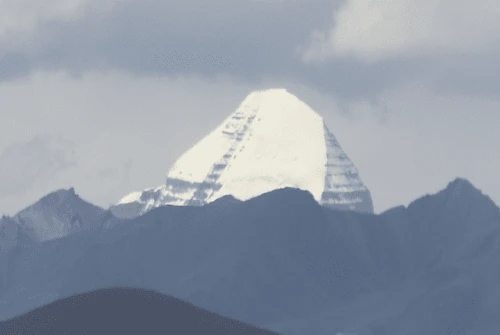Just like trekking, photography has evolved in Nepal. Photography using drones is growing increasingly popular in Nepal, and people are using it to capture the country's stunning scenery from various perspectives. Nepal has every type of landscape potential for the perfect drone photo. There are tranquil high-altitude lakes, lonely valleys, tropical forests, alpine grasslands, and a lot more.
You'll have lots of opportunities to capture pictures of Nepal's mountains from Everest's snow-covered snow-capped slopes to the Annapurna highlands, which are covered with pink and crimson rhododendron flowers in the spring and autumn. Enjoy your hiking trip in Nepal while shooting amazing photos of the Himalayas.
However, despite this attraction, there are numerous fundamental problems about the legality of drones in Nepal. Many people are wondering whether we can bring a drone to Nepal.
As a result, we hope that this blog will answer all of your questions and clear up any confusion about drone activities in Nepal.
Can we bring drones to Nepal?
Drone Regulations in Nepal
Civil Aviation Authority of Nepal
Ministry of Home Affairs
Department of Tourism
Department of National Parks and Wildlife Conservation
Drone Registration in Nepal
This is significant because after acquiring the UIN, you must apply it to the device by mentioning it on a SIM card, an ID tag, or a security plate.
To register your drone and acquire a UIN, complete a registration form and go to the Flight Safety Standard Department (FSSD) for further instructions. Make sure you carry your drone and the following documents:
Duly filled Application Form- RPA/Form/001 for Drone Registration
Photograph of drone showing drone serial number
Registration fee USD 10 plus 13 % VAT
Passport Size color Photograph of applicant
Tribhuvan International Airport Custom Declaration of Drone
Tribhuvan International Airport Custom Declaration of Drone
Copy of Foreign Passport with valid visa of Nepal
Purpose of Operation and Letter of commitment – RPA/Form/002
All these documents should be compulsorily attested with the application form to be submitted at the CAAN.
Drone Category in Nepal
Category | Operations | Weight |
A | Very Low Risk | Less than 250 gms |
B | Low Risk | 250 gms to 2 kg |
C | Regulated Low Risk | 2 kg to 25 kg |
D | Regulated High Risk | Above 25 kg |
Category B: "Low Risk" Operations:
Category C: "Regulated Low Risk" Operations.
Category D: "Regulated High Risk" Operations.
Authorities can develop appropriate regulatory frameworks and safety precautions for various types of drone activities by categorizing them based on their maximum take-off weight (MTOW).
Points to Consider Before Traveling to Nepal with Drones.
To begin, determine whether your drone meets the security regulations established by the airline or airport in your nation.
Second, determine whether your drone is carrying any dangerous products that fail to meet with transportation standards. (For example, high-voltage batteries might demand additional explanation while passing through airport security.)
Third, research and review your airline's specific drone travel restrictions.
Finally, ensure that the rules governing drones are in effect where you intend to take off and land.
However, operating a drone in Nepal is not straightforward. Before utilizing a drone, you need be aware of some things. You must be familiar with Nepal's drone rules, regulations, and authorization processes. You may take a brief exam to ensure that you understand the regulations. Furthermore, if you wish to fly a drone in Nepal, plan your trip for when conditions are optimum.
No-fly zones
UNESCO World Heritage sites and sacred locations, such as the Buddhaneel Kantha Temple
Airports and international boundaries within a radius of 5 kilometers
Singha Durbar and the official houses of the President, Prime Minister, and other significant officials within a radius of one kilometer.
Military and high-security areas
Conservation Areas and National Parks (filming is permitted with the required permit)
Conflict Zones
Penalty for violating Nepal's drone laws.
According to Nepal's civil aviation law, you will be punished or imprisoned based on the severity of the crime.
Things to consider while operating a drone in Nepal.
A drone is capable of performing tasks that a normal camera cannot. It can reveal a perspective that is not visible to the naked eye. As a result, it is always prudent to use caution when operating a drone. The following are some tips for flying a drone in Nepal.
Respect people's privacy and avoid invading their personal places.
Drones must not be utilized to transport things that could endanger living beings.
Ensure your drone flies in accordance with your vision.
Avoid flying in populated regions, events with huge crowds, and disaster areas.
Do not fly your drone if it's misty or foggy.
Flying a drone at night can lead to accidents.
Keep your drone below 400 m and away from flying objects.
Make sure you're not breaching any local restrictions while flying your drone.
Respect the locals' concerns and refrain from taking drone shots if you are asked not to, especially during religious occasions.
Nepal - An Ideal Location to Film a Drone Video
From the Annapurna highlands awash in pink and crimson rhododendron blossoms in the spring to Everest's snow-covered alpine meadows, the mountains of Nepal will give you several opportunities to capture magnificent aerial photographs. Enjoy your trekking expedition while capturing breathtaking footage of the Himalayas.
While obtaining a drone permit can be stressful for a visitor, one can always seek assistance from a trustworthy local organization. Going around the local offices can be intimidating because of the numerous communication issues that may arise.
Using the services of a local travel agency can make the process go much more smoothly and quickly. Each day of your vacation is valuable, and you don't want to spend it running around government offices. Employing a local agency to complete tasks can be beneficial. You save both time and work.
The Civil Aviation Authority's website provides more specific information about drone rules in Nepal.



